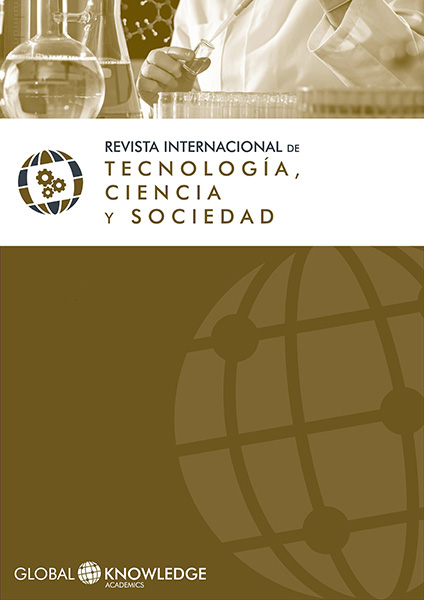Del cíborg al humobile. El teléfono móvil en el transporte público de Zaragoza (España)
DOI:
https://doi.org/10.37467/gka-revtechno.v7.1661Abstract
La relación entre ser humano y máquina ha dado lugar a la aparición de conceptos como el de cíborg. Se trata de un concepto que ha ido modificando su significado inicial, hasta llegar a definir al individuo que surge como interacción entre el humano y la máquina. La presente investigación analiza el papel que están desempeñando en la actualidad los teléfonos móviles, como principal nexo de unión entre nuestra parte biológica y nuestra parte tecnológica. La importancia que han logrado estos dispositivos, fruto de su proliferación, ha llegado hasta tal punto que el actual cíborg puede considerarse un auténtico humobile, producto de la interacción del ser humano (human) con los teléfonos móviles (mobile). Para demostrarlo se investigó el papel de estos dispositivos en un ámbito cotidiano (el transporte público) en la ciudad de Zaragoza (España). La investigación demuestra la gran importancia que los teléfonos móviles manifiestan en este espacio público.References
Asembaum, H. (2017). Cyborg Activism: Exploring the reconfigurations of democratic subjectivity in Anonymous. New Media & Society, 28.
Benjamin, W (1983). Charles Baudelaire: A Lyric Poet in the Era of High Capitalism. Londres: Verso
Brailas, A. V. and Tsekeris, C. (2014). Social behaviour in the internet era: cyborgs, adolescents and education. European Journal of Social Behaviour, 1, 1–4. DOI: 10.5281/zenodo.237023.
Broncano, F. (2009). La melancolía del ciborg. Barcelona: Herder
Carr, N. (2011). Superficiales. ¿Qué está haciendo Internet con nuestras mentes? Madrid: Taurus. Pensamiento.
Clarck, A. (2003). Natural-Born Cyborgs. Minds, Technologies, and the Future of Human Intelligence. Nueva York: Oxford University Press.
Clynes, M. E. and Kline, N. S. (1960). Cyborg and Space. Astronautics, 75, 26–67, 74–75. <http://goo.gl/tQ9B>
Ditrendia (2016). Informe Mobile en España y en el mundo 2016.
Echeburúa, E., Labrador, F. J. and Becoña, E. (coords.) (2013). Adicción a las nuevas tecnologías en adolescentes y jóvenes. Madrid: Pirámide.
Fundación Telefónica (2016). siE[16. La sociedad de la información en España 2016. Madrid-Barcelona: Fundación Telefónica – Ariel.
Gibson, W. (1984). Neuromancer. Ace Books.
Haraway, D. (2000). A cyborg manifesto. Science, technology and social-feminism in the late twentieth century. In: D. Bell and B. M. Kennedy, The cybercultures reader (pp. 291-324). Londres /Nueva York: Routledge.
Licklider, J. C. R. (1960). Man-Computer Symbiosis. IRE Transactions on Human Factors in Electronics, 1, 4–11.
Mumford, L. (2010). El mito de la máquina. Técnica y evolución humana. Logroño: Pepitas de calabaza.
Pisani, F. and Piotet, D. (2009). La alquimia de las multitudes. Cómo la web está cambiando el mundo. Barcelona: Paidós.
Reig, D. and Vílchez, L. F. (2013). Los jóvenes en la era de la hiperconectividad: tendencias, claves y miradas. Madrid: Fundación Telefónica – Fundación Encuentro.
Romero, M., Usart, M. and Ott, M. (2015). Can Serious Games Contribute to Developing and Sustaining 21st Century Skills? Games and Culture, 10, 2, 148–177. <http://dx.doi.org/10.1177/1555412014548919>
Urueña, A. (coord.). (2016). La sociedad en red. Informe anual 2015. Madrid: Ministerio de Industria, Energía y Turismo.
Young, J. Z. (1951). Doubt and Certain in Science: A Biologist’s Reflections on the Brain. Londres: Oxford University Press.
Downloads
Published
How to Cite
Issue
Section
License
Those authors who publish in this journal accept the following terms:
- Authors will keep the moral right of the work and they will transfer the commercial rights.
- After 1 year from publication, the work shall thereafter be open access online on our website, but will retain copyright.
- In the event that the authors wish to assign an Creative Commons (CC) license, they may request it by writing to publishing@eagora.org







